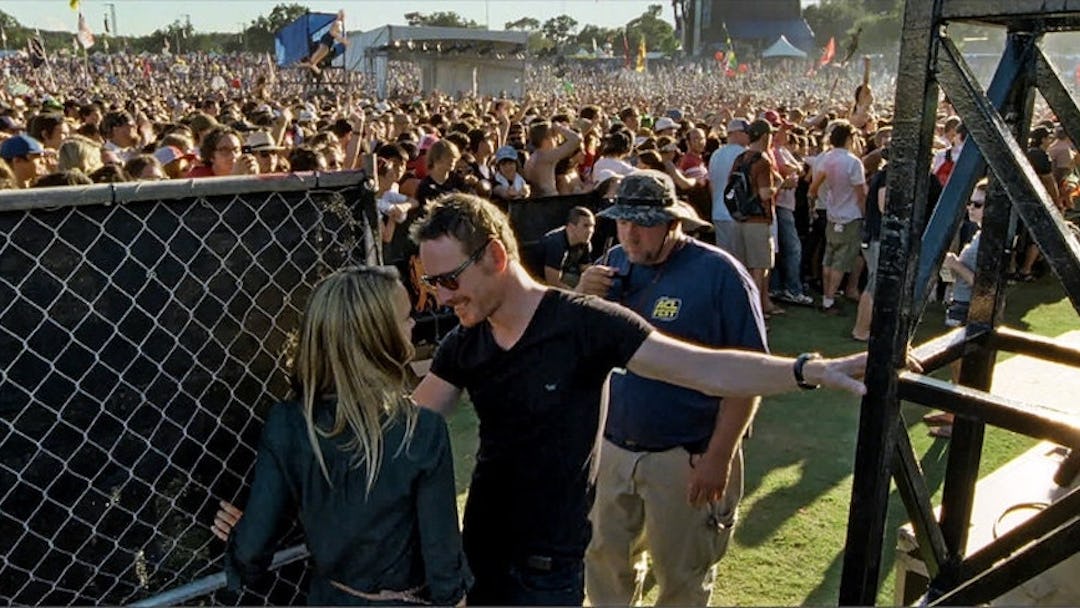“I don’t like to see the birds in the sky because I miss you. Because you saw them with me. Come save me from my bad heart.” – Rooney Mara, Song to Song
“This is fucking ponderous, man, ponderous! Fuckin’ ponderous!” – Casey Kasem, American Top 40 outtake
The whispery, searching voice-overs that have become director Terrence Malick’s raison d’être are back, in full effect, in his new romantic drama Song to Song, and good Lord they’re getting downright embarrassing. In addition to the seventh-grade free verse above, I jotted down these bits of faux-etic nonsense: “I love pain. It feels like life”; “I played with the flame of life”; “I’m not who I thought I was. Am I a good person?”; and “I was desperate to feel something real. Nothing felt real… I was just reaching for air.” It’s the kind of pseudo-philosophical grad student mumbling that we’d jeer at a first-time filmmaker for trying to sell, but this is Terrence Malick, and he is an artiste, so it must be breathtakingly brilliant. What a bunch of horseshit.
It’s somewhat daring, how he keeps taking these tools of transition – voice-over, music, striking but sometimes disconnected images, etc. – and trying to make full movies out of them, here and in To the Wonder and Knight of Cups before it. But it sure as hell isn’t compelling. All of these films have been, on some level, about the relationships between men and women, but they’re never really interacting with each other; the modus operandi of Malick 2.0 is to shoot his actors “being a couple,” which apparently involves quite a lot of frolicking and giggling and dancing, and then overlaying it with internal monologues about their feelings. (In Song to Song, Rooney Mara spends more time talking about beau Ryan Gosling, to her father, than she spends talking to him.) Not to broken-record it, but what do these two say to each other? What is their relationship like, beyond making coy googly-eyes at each other? How do they communicate? I guess I’ll never stop wondering this about the characters in these late Malick movies, and it seems he’ll never start.
That’s not all that’s missing. Much was made, especially at its SXSW premiere last weekend, of Malick setting Song to Song within the music scene of his hometown of Austin, shooting at several of their musical festivals and filling it with cameos from real-life rock stars like Patti Smith (whose brief but haunted turn is the best thing in the movie), Iggy Pop, the Red Hot Chili Peppers, and John Lydon. But weirdly, there’s barely any music in the damn thing – and weirdest of all, there’s basically none from our leading characters, two of whom (Gosling and Mara) are ostensibly musicians, while a third (Fassbender) is supposedly a wildly successful music producer. So we have no idea whatsoever what kind of artists they are, and how these relationships affect their music, because we never hear the work. It’s a downright inexplicable choice, all things considered; his style and worldview is so overpowering, Song to Song could be set anywhere, about anyone, with little of substance altered.
And I know, I know, all these concerns of narrative and structure and setting are so mired in conventional storytelling and Malick just like transcends all that with his post-cinematic perspective, Squaresville, and that’s fine, of course you don’t have to conform to traditional filmmaking norms. But you have to replace them with something, anything, and what began as bold formal experimentation has quickly collapsed into monotony. Recognizable faces drift in and out of view for mere moments, with no explanation. (Sorry, but any filmmaker who hires Holly Hunter and misuses her this egregiously should be held accountable.) We’re left treading water for long stretches to figure out who is what to who, and why. The tempo never shifts, maintaining the same turgid rhythms for the entirety of its 129 minutes, which consequently feel much longer. Tall weeds are sat and walked in, seemingly unaware that putting Malick characters in them, at this point, is like Scorsese using “Gimme Shelter” again. And by the end of the movie, when he reveals that his hero just wants a simple life, working with his hands and all that, you couldn’t construct a more effective parody of what this brilliant filmmaker has become.
To be clear, none of this is to suggest anything as vulgar as to “take the camera from Terrence Malick”; for better or worse, no one else is doing what he’s doing, and (as expected) he and cinematographer Emmanuel Lubezki capture some genuinely stunning compositions and evocative images. The way they use the wide-angle lens on jittery handheld shots captures a restlessness that’s right for the characters (even if it’s undone by the otherwise snoozy pacing). The style yields occasional rewards – the moment of genuine and unguarded emotion Gosling conveys after visiting his ill father is more verbose than any monologue, and the way the camera focuses on Mara’s hands when her own father makes her antsy is delicate and powerful. Every once in a while, he’ll put a sequence together that makes you tremble – the way the camera moves, the way the images but up against each other, the trust he puts in in actor’s face to carry a moment. But that’s just style, and these days, that’s all he’s got.
“Song to Song” opens Friday in limited release.
